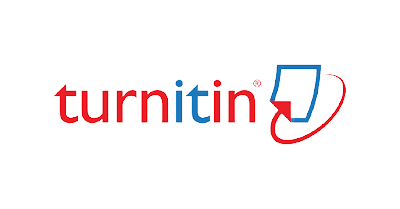FENOMENA URBAN HEAT ISLAND DI KOTA BANDUNG
Abstract
The Urban Heat Island (UHI) phenomenon is defined as an increase in temperature in urban areas that is higher than the temperature in surrounding rural areas. In Indonesia, Bandung Municipality is one of the urban areas that is indicated to experience an increase in surface temperature due to the rapid pace of development. Therefore, this study will review the existing literature on the phenomenon of UHI. Subsequently, the phenomenon is identified through an examination of the spatial pattern of surface temperature and vegetation density values in Bandung Municipality. The analysis was conducted using Landsat 8 images, which were then processed with a GIS program to generate Land Surface Temperature (LST) maps and Normalized Difference Vegetation Index (NDVI) maps. The results of this study indicate that Bandung Municipality experienced an increase in surface temperature from 2018 to 2022. This finding aligns with the observed reduction in vegetation density in Bandung City in 2022. Additionally, the rise in population and anthropogenic activities in urban areas contribute to the observed increase in surface temperature in Bandung Municipality.
Downloads
References
Ahmad, A. Q., & Urufi, Z. (2021). Analisis Pengaruh Variabel Antropogenik Terhadap Urban Heat Island di Kota Bandung. Prosiding FTSP Series.
Badan Pusat Statistik. (2023). Kabupaten Takalar Dalam Angka Tahun 2023.
Baroroh, N., & Pangi. (2018). Perubahan Penutup Lahan dan Kerapatan Vegetasi terhadap Urban Heat Island di Kota Surakarta.
Corburn, J. (2009). Cities, Climate Change and Urban Heat Island Mitigation: Localising Global Environmental Science. Urban Studies, 46(2), 413–427. https://doi.org/10.1177/0042098008099361
Darlina, S. P., Sasmito, B., & Yuwono, B. D. (2018). Analisis Fenomena Urban Heat Island Serta Mitigasinya (Studi Kasus: Kota Semarang). Jurnal Geodesi Undip, 7(3), 77–87.
Debbage, N., & Shepherd, J. M. (2015). The urban heat island effect and city contiguity. Computers, Environment and Urban Systems, 54, 181–194. https://doi.org/10.1016/j.compenvurbsys.2015.08.002
Gago, E. J., Roldan, J., Pacheco-Torres, R., & Ordóñez, J. (2013). The city and urban heat islands: A review of strategies to mitigate adverse effects. Renewable and Sustainable Energy Reviews, 25, 749–758. https://doi.org/10.1016/j.rser.2013.05.057
Gunawardena, K. R., Wells, M. J., & Kershaw, T. (2017). Utilising green and bluespace to mitigate urban heat island intensity. Science of The Total Environment, 584–585, 1040–1055. https://doi.org/10.1016/j.scitotenv.2017.01.158
Hardyanti, L., Sobirin, S., & Wibowo, A. (2017). Variasi Spasial Temporal Suhu Permukaan Daratan di Kota Jakarta tahun 2015 dan 2016. Prosiding Industrial Research Workshop and National Seminar, 8, 704–713.
Himayah, S. (2019). Perubahan Temperatur Permukaan Lahan Di Kota Bandung Tahun 2009-2018. Jurnal Geografi Gea, 19(2), 105–112.
Indrawati, D. M., Suharyadi, S., & Widayani, P. (2020). Analisis Pengaruh Kerapatan Vegetasi Terhadap Suhu Permukaan dan Keterkaitannya Dengan Fenomena UHI. Media Komunikasi Geografi, 21(1), 99. https://doi.org/10.23887/mkg.v21i1.24429
Jacob, D. J., & Winner, D. A. (2009). Effect of climate change on air quality. Atmospheric Environment, 43(1), 51–63. https://doi.org/10.1016/j.atmosenv.2008.09.051
Kullberg, A. T., & Feeley, K. J. (2023). Urban Heat Islands and What They Can Teach Us About Climate Change. Frontiers for Young Minds, 11.
Liwan, S., & Latue, P. C. (2023). Analisis Spasial Perubahan Suhu Permukaan Daratan Kota Kupang Menggunakan Pendekatan Geospatial Artificial Intelligence (GeoAI). Buana Jurnal Geografi, Ekologi Dan Kebencanaan, 1(1), 14–20. https://doi.org/10.56211/buana.v1i1.343
Machmud, S. K., & Nouri, M. N. (2024). Pengaruh Karakteristik Komuter Di Kota-Kota Satelit Pada Kawasan Jabodetabek. EDUSAINTEK: Jurnal Pendidikan, Sains Dan Teknologi, 11(3). https://doi.org/10.47668/edusaintek.v11i3.1286
Magee, N., Wendler, G., & Curtis, J. (1999). The Urban Heat Island Effect at Fairbanks, Alaska. Theoretical and Applied Climatology, 64(1–2), 39–47. https://doi.org/10.1007/s007040050109
Magli, S., Lodi, C., Lombroso, L., Muscio, A., & Teggi, S. (2015). Analysis of the urban heat island effects on building energy consumption. International Journal of Energy and Environmental Engineering, 6, 91–99.
McGregor, G. R., & Nieuwolt, S. (1998). Tropical Climatology: An introduction to the Climates of Low Latitudes (2nd ed.). John Wiley & Sons.
Michau, Y., Lemonsu, A., Lucas-Picher, P., & Caillaud, C. (2023). Evaluation of the Urban Heat Island of 12 cities of France in a high-resolution regional climate model simulation. Urban Climate, 47, 101386. https://doi.org/10.1016/j.uclim.2022.101386
Mussetti, G., Davin, E. L., Schwaab, J., Acero, J. A., Ivanchev, J., Singh, V. K., Jin, L., & Seneviratne, S. I. (2022). Do Electric Vehicles Mitigate Urban Heat? The Case of a Tropical City. Frontiers in Environmental Science, 10. https://doi.org/10.3389/fenvs.2022.810342
Naf, M. Z. T., & Hernawati, R. (2018). Analisis fenomena UHI (Urban Heat Island) berdasarkan hubungan antara kerapatan vegetasi dengan suhu permukaan. ITB Indonesian Journal of Geospatial, 5(1), 25–36.
Nuruzzaman, H., & Syahrul, F. (2016). Analisis risiko kejadian demam tifoid berdasarkan kebersihan diri dan kebiasaan jajan di rumah. Jurnal Berkala Epidemiologi, 4(1), 74–86.
Putra Arie Gayo, A. (2023). Urban Heat Island Pada Kota Industri. EDUSAINTEK: Jurnal Pendidikan, Sains Dan Teknologi, 10(1), 212–220. https://doi.org/10.47668/edusaintek.v10i1.642
Putra, W. (2023). Jumlah Kendaraan di Bandung Hampir Menyamai Populasi Warga, Ini Kata Pengamat. In Detik Jabar. Detik.com.
Restiana, D. I., & Permadi, D. A. (2023). Estimasi Penurunan Emisi Pencemar Udara Pengaruh Dari Pengoperasian Bus Rapid Transit (BRT) Di Kota Bandung. Jurnal Serambi Engineering, 8(2).
Ridwan, M. K. (2024). Fisika Energi Lingkungan Perkotaan: Upaya Memahami dan Mengurangi Iklim Panas Perkotaan. UGM PRESS.
Rizwan, A. M., Dennis, L. Y. C., & Liu, C. (2008). A review on the generation, determination and mitigation of Urban Heat Island. Journal of Environmental Sciences, 20(1), 120–128. https://doi.org/10.1016/S1001-0742(08)60019-4
Rydman, R. J., Rumoro, D. P., Silva, J. C., Hogan, T. M., & Kampe, L. M. (1999). The rate and risk of heat-related illness in hospital emergency departments during the 1995 Chicago heat disaster. Journal of Medical Systems, 23(1), 41–56. https://doi.org/10.1023/A:1020871528086
Sartina, Zhiddiq, S., Suprapta, Maddatuang, Basram, N., Rusdi, & Maru, R. (2023). Urban Heat Island Mitigation for CBD Areas With City Form and Ciy Function Approaches. E3S Web of Conferences, 400, 01002. https://doi.org/10.1051/e3sconf/202340001002
Thommen, O. (2005). Heat wave 2003 and mortality in Switzerland. Swiss Medical Weekly. https://doi.org/10.4414/smw.2005.11009
U.S. Environmental Protection Agency. (2008). Green Roofs." In: Reducing Urban Heat Islands: Compendium of Strategies. Draft. https://www.epa.gov/heat-islands/heat-island-compendium.
Vásquez-Álvarez, P. E., Flores-Vázquez, C., Cobos-Torres, J.-C., & Cobos-Mora, S. L. (2022). Urban Heat Island Mitigation through Planned Simulation. Sustainability, 14(14), 8612. https://doi.org/10.3390/su14148612
Widyaningrum, G. L. (2018). PBB: 68% populasi dunia akan tinggal di area perkotaan pada 2050. Retrieved from National Geographich Indonesia Website: Https://Nationalgeographic. Grid. Id/Read/13673071/Pbb-68-Populasi-Dunia-Akan-Tinggal-Di-Areaperkotaan-Pada-2050.
Wong, N. H., & Yu, C. (2005). Study of green areas and urban heat island in a tropical city. Habitat International, 29(3), 547–558. https://doi.org/10.1016/j.habitatint.2004.04.008
Zulkifar, M. F., Virgianto, R. H., & Kartika, Q. A. (2022). Pengaruh Urban Heat Island terhadap Kenyamanan di Jakarta dan Sekitarnya Tahun 1993-2018. The Climate of Tropical Indonesia Maritime Continent Journal, 1(1), 34–58.
Copyright (c) 2025 Fabio Esa Putra, Gildan Kantona Hamdani, Viona Dika Rikumahu, Chivilya Uny

This work is licensed under a Creative Commons Attribution-ShareAlike 4.0 International License.
Jurnal allows anyone to compose, correct, and do derivative works, even for commercial purposes, as long as they credit for the original work. This license is the freest. It is recommended for maximum distribution and use of licensed material.
The submitted paper is assumed not to contain any proprietary materials that are not protected by patent rights or patent applications; The responsibility for technical content and protection of proprietary materials rests with the authors and their organizations and not the responsibility of journal or its editorial staff. The primary (first/appropriate) author is responsible for ensuring that the article has been viewed and approved by all other authors. The author's responsibility is to obtain all necessary copyright waivers to use any copyrighted material in the manuscript before submission.
Jurnal Pendidikan, Sains dan Teknologi allows the author(s) to hold the copyright without restrictions and allow the author(s) to retain publishing rights without restrictions. Jurnal Pendidikan, Sains dan Teknologi CC-BY-SA or an equivalent license as the optimal license for the publication, distribution, use, and reuse of scholarly work. Jurnal Pendidikan, Sains dan Teknologi allows the author(s) to hold the copyright without restrictions and allow the author(s) to retain publishing rights without restrictions. Jurnal Pendidikan, Sains dan Teknologi CC-BY-SA or an equivalent license as the optimal license for the publication, distribution, use, and reuse of scholarly work.
In developing strategy and setting priorities Jurnal Pendidikan, Sains dan Teknologi recognize that free access is better than priced access, libre access is better than free access, and libre under CC-BY-SA or the equivalent is better than libre under more restrictive open licenses. We should achieve what we can when we can. We should not delay achieving free in order to achieve libre, and we should not stop with free when we can achieve libre.
Jurnal Pendidikan, Sains dan Teknologi is licensed under a Creative Commons Attribution-ShareAlike 4.0 International License.
You are free to:
- Share a copy and redistribute the material in any medium or format
- Adapt a remix, transform, and build upon the material for any purpose, even commercially.
- The licensor cannot revoke these freedoms as long as you follow the license terms.






